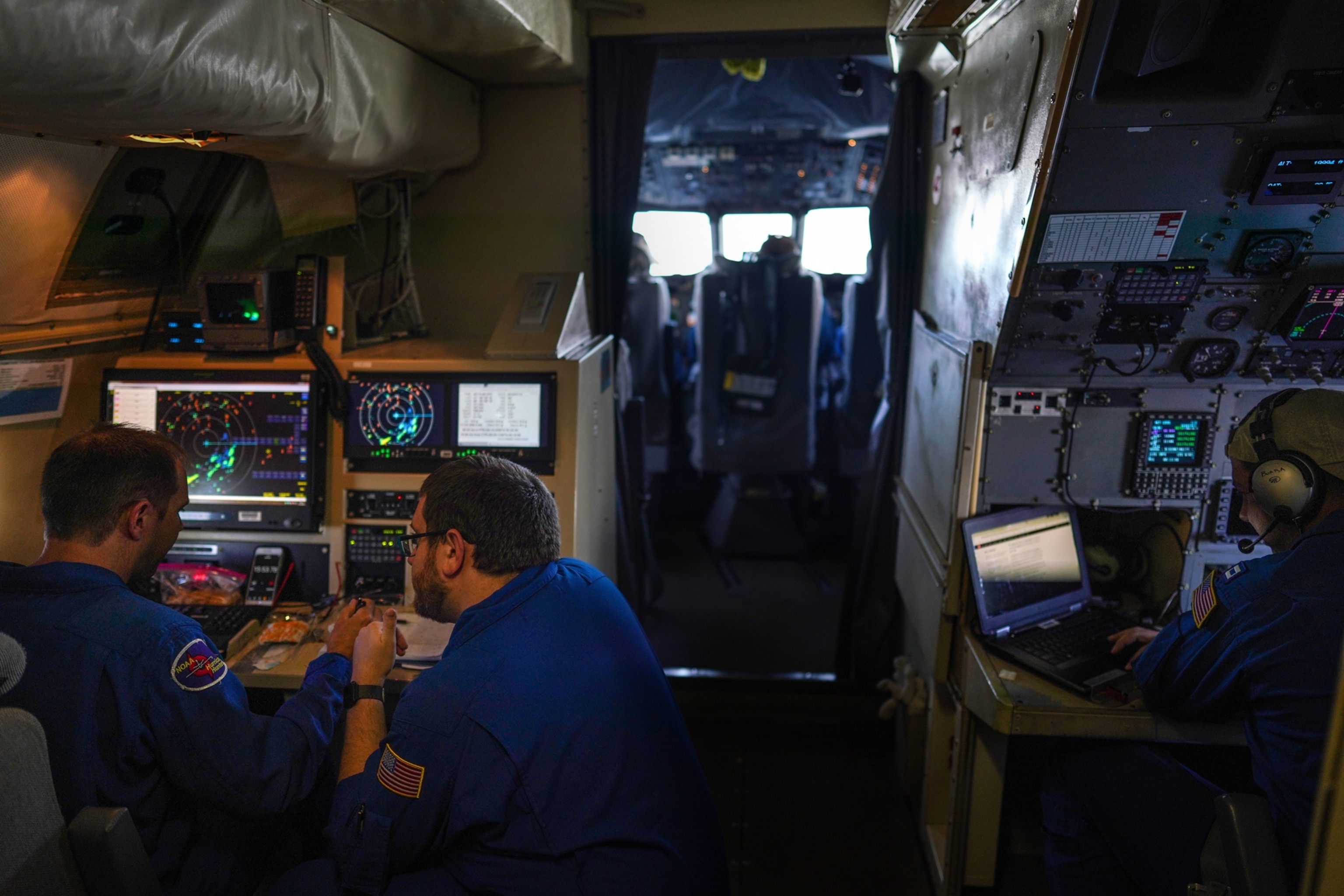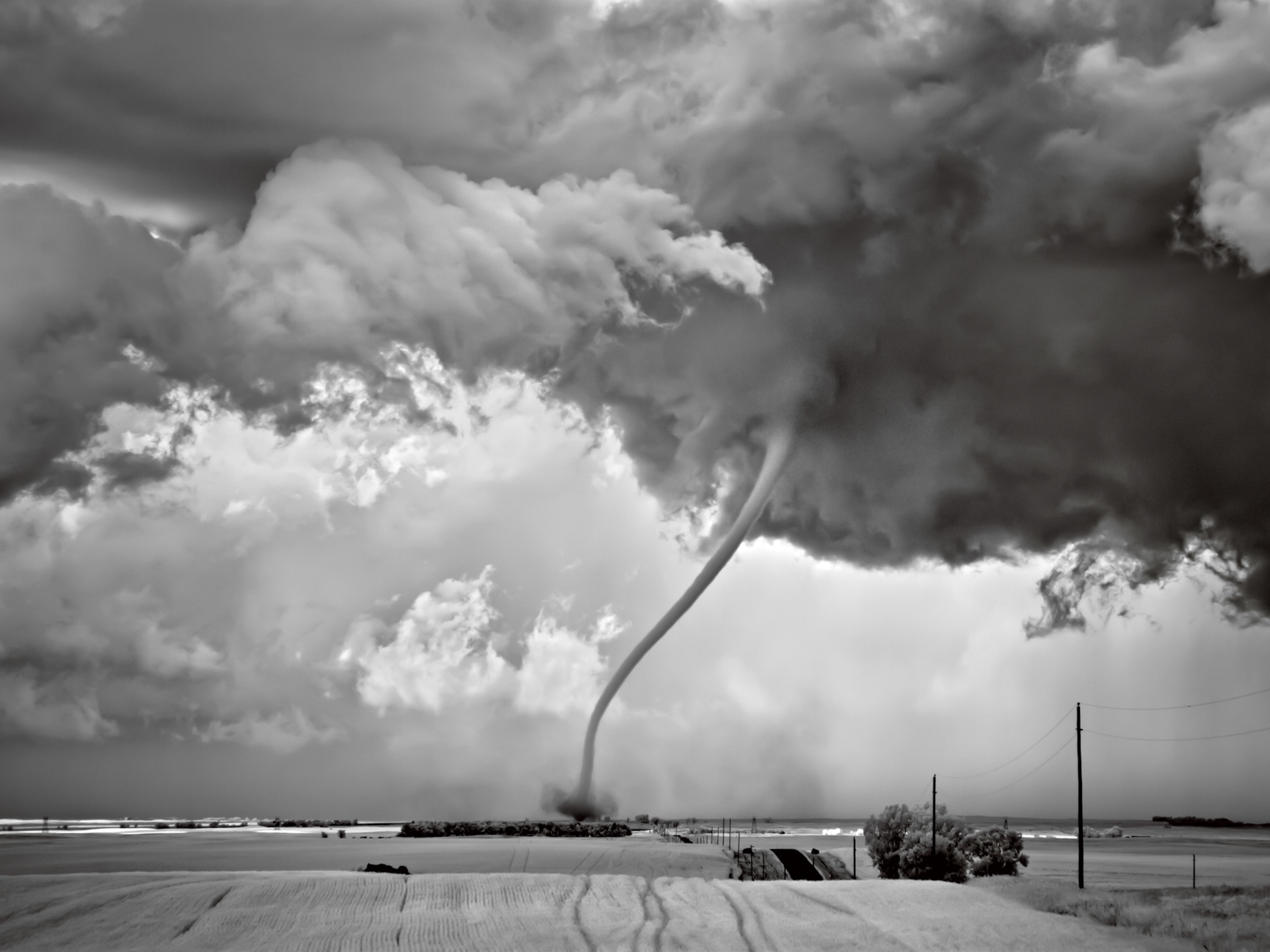
Hurricane path forecasts have much improved. Are they as good as they can get?
Storm track forecasts are one of the great science successes of the past few decades, but how much better they can get is an open question.
The first glimmers of the proto-Hurricane Laura showed up on forecasters’ radars on August 16, 2020, a large, loose splattering of clouds rolling off the edge of West Africa.
It grew quickly. By the time it got a name, on August 21, forecasters for the National Hurricane Center (NHC) were watching it obsessively, kneading in data from airplanes and models and their own decades of experience to forecast exactly where and how the storm would develop. By the 24th, the center’s three-day forecast predicted that Laura would make landfall at Cameron, Louisiana, at 2 a.m. on the 27th.
It arrived at 1 a.m., just one hour and 3,000 feet away.
That bulls-eye was a remarkable demonstration of how much forecasting has leapt forward in the past few decades. “The improvements have been really phenomenal,” says Chris Landsea, a hurricane researcher at the NHC.
But are we nearing the limit for how accurate storm track predictions can get? Landsea and a colleague recently asked that question and found some evidence that suggests it may be true. But others think the same scientific dedication that led to the super-accurate forecast for Laura will break through that supposed limit.
How have forecasts gotten better?
Though 2020 has already seen 26 named storms, including Hurricane Epsilon just this week, hurricanes are rare events. Between 1955 and 2015, only 88 made landfall in the United States. Add to that their semi-chaotic nature and tendency to spend their youth in remote stretches of ocean that aren’t routinely crisscrossed by data collectors, and you end up with a tricky phenomenon to understand.
What’s amazing, says Allison Wing, an atmospheric scientist at Florida State University, is how much we do know.
The clearest success has come in forecasting the storm track. In 1990, the average three-day forecast was off by about 300 nautical miles, which is the distance from New Orleans to Houston. Today, that’s down to 100 miles. By the time a storm makes landfall, the difference between its predicted and real locations is less, on average, than 8 miles (and in Laura’s case, much less). The lead time has also grown: A five-day track forecast today is as accurate as a three-day one was in 2001.
Much of that progress is because weather forecasting generally has advanced. A tropical cyclone is like a stick floating in a river: Larger weather systems move it along in their swirling flow. If meteorologists know what’s happening with the big atmospheric streams, they’ll have a pretty good idea of where a storm will track.
Forecasts are better now “not because we had a bunch of knuckleheads 40 years ago and a bunch of Einsteins today,” says Landsea, but because thousands of scientists around the world developed a more detailed understanding of atmospheric physics, translated it into better forecast models running on more powerful computers, and have reams of real-time weather data to feed the models.
The underlying concepts have been in place for a century. In the 1920s, scientists hand-calculated the first weather “forecasts” for two spots in Europe, based on developing theories of the atmosphere and observations telegraphed in from far-off locales. But the math required for an ostensible “six-hour” forecast took six weeks to do.
More than a century later, the equations from that first calculation form the backbone of modern weather models. But as computers have gotten more powerful, the calculations can begin earlier in the storm’s life, says Chia-Ying Lee, an atmospheric scientist at the Lamont Doherty Earth Observatory. “If you get the genesis correct, you have a pretty good chance of getting the rest.”
Now, flotillas of satellites feed a steady flow of atmospheric and ocean data into models that produce 3-D simulations of the winds and clouds. Computers are powerful enough, and data precise enough, to reconstruct weather happening over areas as small as just a few miles in diameter.
“We want them as small as individual clouds, ideally,” says Rosimar Rios-Berrios, an atmospheric scientist at the National Center for Atmospheric Research. “Going down in scale, you’re going away from seeing just high-pressure and low-pressure systems, but going to groups of clouds, how water vapor is turning into clouds, and more.”
All the tweaks, little and big, have added up to a pretty consistent four-percent improvement in track precision each year, calculates Zoltan Toth, an atmospheric scientist at NOAA’s Global Systems Laboratory. The NHC started issuing five-day forecasts in 2003; it’s flirting with seven-day ones now.
Where’s the limit?
But can the improvements keep marching forward? In 2018, Landsea and a colleague came to an unsettling conclusion: Improvements in the accuracy and lead time of track forecasts might be slowing.
They looked at the errors in the 24- and 72-hour track forecasts from the past 30 years, as well as 20 years of data for the 120-hour forecasts. The shorter forecasts were still getting a little bit better each year, on average. But the longer ones had stalled.
Theoretically, weather predictions can’t improve indefinitely. Even with perfect models, and perfect math, and near-perfect data, the ultimate limit for any weather prediction is somewhere under two weeks, longstanding theory has held.
For something more complicated, like a tropical cyclone, the limit of predictability is much shorter. That’s because even a tiny initial error—a few hundred meters in the location of a storm center, or a few knots in the measurement of wind speed—compounds with time. Tiny errors eventually grow so big that a forecast quickly becomes useless, no better at predicting the future than chance. Time-wise, forecasts stretching farther out than five or six days were long considered pie-in-the-sky goals. And the shorter-term forecasts can only get better if the initial errors get smaller.
Landsea and his colleague calculated the theoretical “best” a model could do, assuming small initial errors that doubled roughly every two days. In the Atlantic, a 120-hour forecast could likely get about 175 nautical miles from the truth; current models get to about 200. For 24-hour forecasts, the error could shrink from 45 miles to 40. In other words, we’re fast approaching the limit of how good the track forecasts can get:At the rate we’re going, Landsea argues, we could max out within a few years.
He’d like to be wrong, though. “I think it’s possible we’ll look back in eight to 10 years and realize we’ve blown past the theoretical limits,” he says cheerfully.
When Toth read the paper, he thought, wait a second. There’s no reason science would stop getting better; many previous “limits” of predictability have turned out not to be intrinsic to the system and have been overcome by unforeseen scientific cleverness. Using a different approach to analyze the same data on forecast errors than Landsea did, Toth and his colleague Feifan Zhou found much looser theoretical limits of predictability and much more room for improvement in five-day forecasts and shorter ones as well.
By their calculations, we should be able to gain about a day of extra lead time each decade well into the future—meaning that by 2050, we would have eight-day forecasts as accurate as the five-day ones today.
“We are fighting…for our forecast accuracy,” Toth says, “We are fighting for it every day. We put effort into doing things a little better, year by year, so we can knock the error down. If we put 10 times more resources into it, who knows, maybe we could even go a little faster.”
Let’s hope more progress is coming
The improvements in forecasts so far have occurred so slowly that they’ve been nearly invisible to the public, says Rebecca Morss, an atmospheric scientist at the National Center for Atmospheric Research with an expertise in risk communication. “As soon as the forecasts improve, society just eats them up and expects more,” she says.
But those extra two days in the accurate track forecast gained since 2001 make a difference, says Samantha Montano, an emergency management expert at the Massachusetts Maritime Academy. “When you go back many decades, we just were not able to do the kinds of large-scale evacuations we do now, because you just didn’t have enough warning.”
Cities, especially big ones like Houston or New Orleans, need several days to evacuate safely, and a few miles difference in track can drive decisions about whether to leave or stay put. Eric Blake, a forecaster with the NHC, notes that initial forecasts this year had Hurricane Laura heading toward Houston; the NHC’s subsequent course corrections helped the city manager decide not to evacuate the city.
The economic value of improving forecasts is enormous. A recent analysis suggests that since 1970, good hurricane forecasts have been worth a staggering $82 billion to coastal residents. Another suggests that improvements in storm track forecasting just in the last decade have saved over $1 billion.
Besides the storm track, emergency managers and coastal residents are interested in better forecasts of other characteristics of a storm, like the speed of its strongest winds, the height of its storm surge, and how much rain it will dump. “We still don’t have a complete understanding of the physics that controls things like rapid intensification,” Wing says—which means there’s plenty of room to get better at that too.
So where is the limit? “I think it’s an open question,” says Blake. “The reality of it is we’ve blown through all the old predicted limits.”








